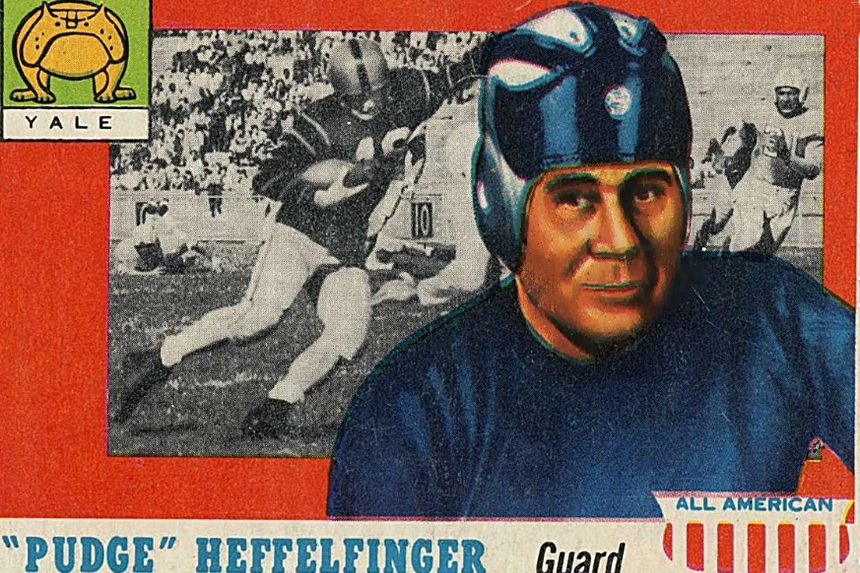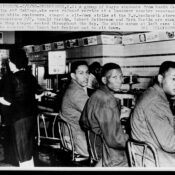This series by American studies professor Ben Railton explores the connections between America’s past and present.
As the nation and world build up to the Super Bowl, always one of the most watched events of the year, it’s difficult to imagine a time when professional football wasn’t near the center of our cultural and social landscape. But the sport evolved through a series of distinct late 19th and early 20th century stages. But it was the career of one particularly prominent early football star named Pudge Heffelfinger that opened the door to pro football.
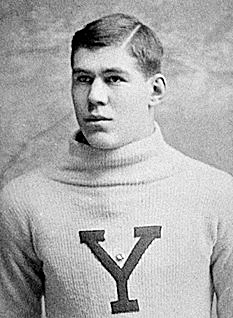
Invented sometime in the mid-19th century (as with baseball, the sport’s origins are hazy and contested) and played intercollegiately for the first time in 1869, by the 1880s football occupied a significant place in the national sporting scene. But the two central realities of football in the late 19th century are equally hard to believe today: that college football was pretty much the only game in town, and that at the center of the college football universe was the Ivy League, schools like Harvard and Yale.
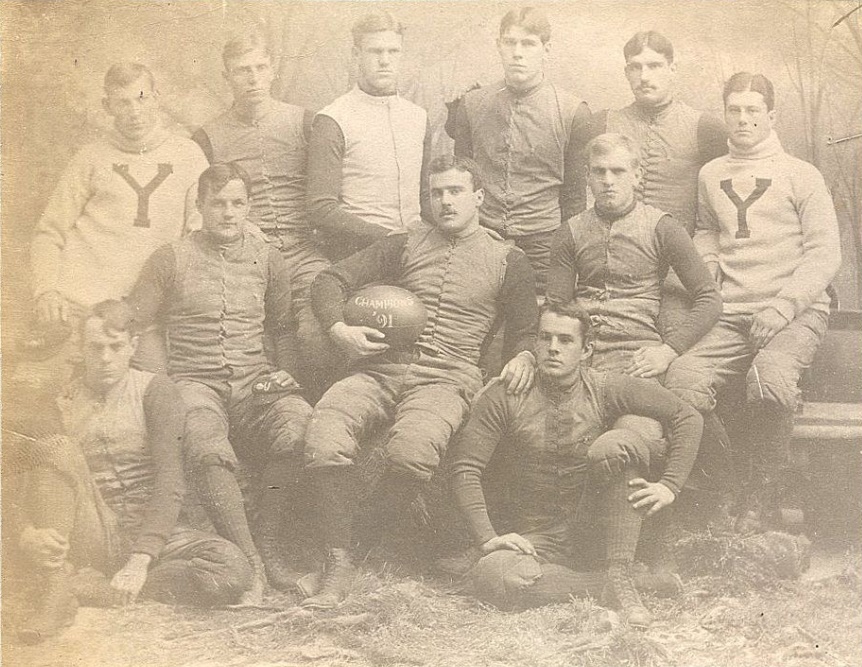
William “Pudge” Heffelfinger was born in Minneapolis in 1867, his father a Civil War veteran who had come by riverboat to the frontier city and opened a shoe factory there. A star athlete in high school, Heffelfinger went on to become a three-time All-American defensive guard during his four years at Yale (the 1888 to 1891 seasons).
Heffelfinger allegedly got off to a slow start – he was not aggressive enough, despite his 6’3” 210-pound frame. In order to motivate him, one of the assistant coaches wrote him a rousing letter in blood.
But it was under legendary coach Walter Camp, that Heffelfinger led the Yale team to undefeated seasons. The 1888 team, moreover, also gave up precisely no points on the season, outscoring its thirteen opponents 698 to 0 (for an average victory of 53.7 to 0). Few if any sports teams, from any era and at any level, have equaled the success of that Ivy League football squad.
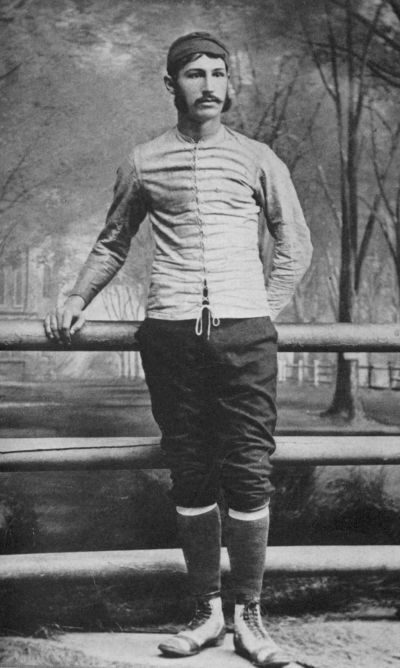
Professional sports were beginning to emerge in America during that same late 19th century period; but when compared with the juggernauts that our major sports teams and leagues now are, they developed in a strikingly haphazard fashion. Both the historic paycheck that made Pudge Heffelfinger the first professional football player and the story of how that document was discovered embody that randomness.
In the 1960s, the Pro Football Hall of Fame, alerted by a rediscovered item from Pittsburgh newspapers, recovered a long-lost page from the account ledger of the Allegheny Athletic Association. That Association was one of many semi-pro organizations in the era through which former college stars like Heffelfinger could continue to play the game while pursuing their professional careers in other areas. But in late 1892, all that changed: the rediscovered ledger page reveals that Heffelfinger was paid both a $25 salary and a $500 “game performance bonus” by Allegheny to play in a game against the Pittsburgh Athletic Club on November 12, 1892.
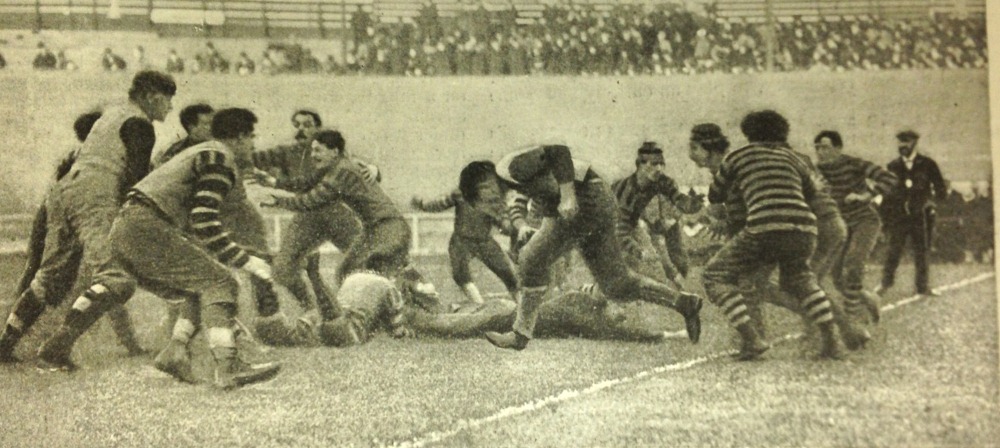
It appears from the ledger and other sources that Heffelfinger was the only player paid to appear in that game, making him the first professional football player. Over the next few years, six other prominent players would be paid, some for individual games and some on salary for entire seasons. One of them was only 18 years old: John Brallier, who while quarterback at Pennsylvania’s Indiana College was paid $10 by the Latrobe semi-pro team for a September 1895 game against rival Jeannette. Such was the haphazard nature of “professional” sports in the 1890s, and yet these were the vital first steps toward the cultural behemoth that is the 21st century National Football League.
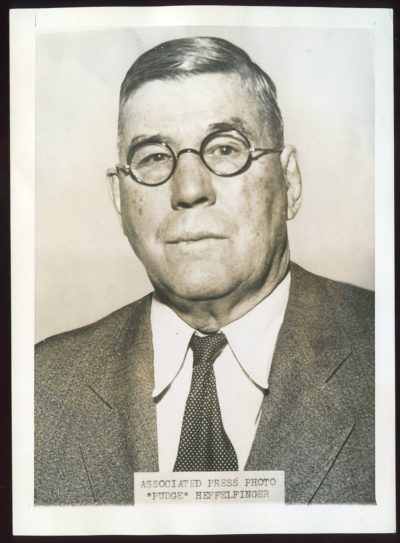
By the mid-20th century, both football in general and professional football in particular had become far more organized and wide-ranging. In his final role in football (after a few years of coaching at various universities and an unsuccessful attempt to take up the family shoe manufacturing business) Heffelfinger compiled and authored Heffelfinger’s Football Facts, an annual publication that featured statistics and schedules for both college and pro teams. This periodical, which was published between 1935 and 1950, was one of the first of the now-ubiquitous annuals created for every major sport. Heffelfinger’s Football Facts did more than just reflect football’s growth and popularity, though—it also helped contribute to those trends, using the name and identity of this iconic early star, as well as new 20th century journalism and media technologies, to publicize and sell the sport to familiar and new audiences alike.
In recent years, controversies such as concussion concerns and social protests have shifted the football landscape, and will no doubt continue to. But as Pudge Heffelfinger reveals, the story of football has been an evolving one from the outset.
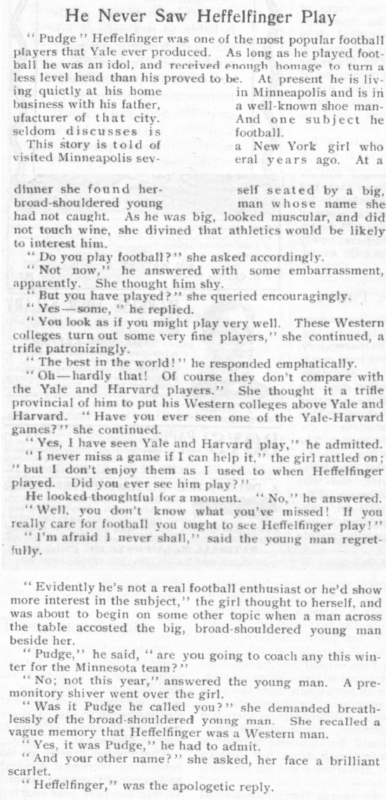
Become a Saturday Evening Post member and enjoy unlimited access. Subscribe now
